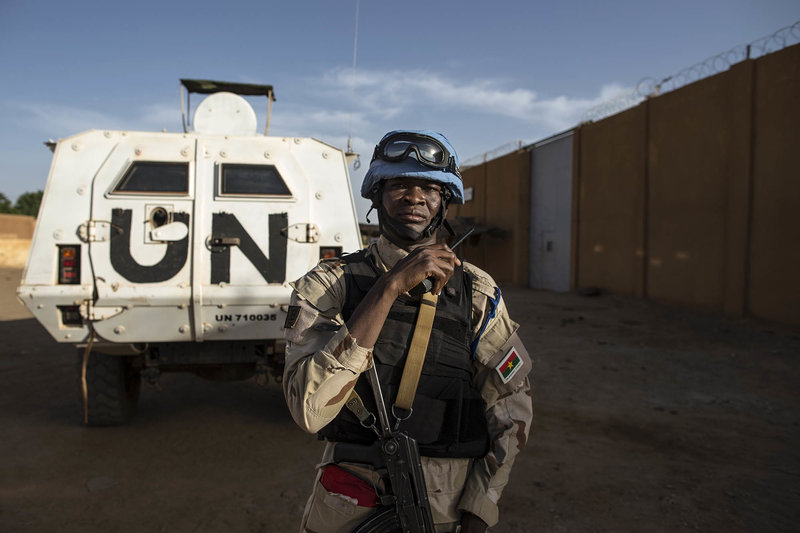The protection of civilians is an activity that is at the heart of the UN’s peacekeeping operations.
Eight missions, comprising more than 90% of the UN’s peacekeepers, currently have a mandate to protect civilians: ONUCI in Ivory Coast, UNMIL in Liberia, UNAMID in Darfur, UNMISS in South Sudan, UNISFA in Abyei, MONUSCO in the Democratic Republic of the Congo, MINUSTAH in Haiti and UNIFIL in Lebanon.
MINUSMA is the ninth mission with such a mandate. The mission is authorized to use all means necessary to ensure the protection of civilians in immediate danger of physical violence. This responsibility is understood to be complementary to that of the host government, which has the primary responsibility to protect its own population.
In addition, the mission has to ensure the protection of women and children affected by armed conflict in particular, and to take specific measures to this effect.
Many other actors contribute to protection: actors ensuring protection through humanitarian assistance or through observation and monitoring/reporting related to the respect for human rights.
How do UN peacekeeping operations protect civilians?
The unique characteristic of UN peacekeeping operations is their capacity to protect civilians from physical violence. Peacekeeping missions adopt a holistic approach, and the civilian, police and military components of the mission work hand-in-hand to achieve this objective.
The mission takes a three-tiered approach in protecting civilians. The first consists of dialogue and political advocacy, such as support for reconciliation, peace agreements or mediation, liaison with the government, or the resolution of local conflicts. These activities are mainly undertaken at the level of the mission’s senior leadership. Even if these efforts are not always very visible, the importance of this work aiming to support the host government in its responsibilities should not be underestimated.
The second tier is related to activities protecting civilians from physical violence, including the visible presence of unarmed mission personnel, proactive measures to dissuade potential attackers, and logistical support to the host government with the goal of defending civilians against attacks.
It is important to specify that this is not only the prerogative of the mission's military component. Actions taken by civilians, such as forging relationships with the population – particularly women, leaders and local authorities – are part of this approach as well.
The third tier consists of activities aiming to support the establishment of a protective environment that increases security and protects civilians from physical violence. The majority of these activities consist of strengthening the host government’s capacities to protect, including through the rule of law, security sector reform and training on human rights, the protection of children and sexual and gender-based violence.
 UN
UN United Nations Peacekeeping
United Nations Peacekeeping

